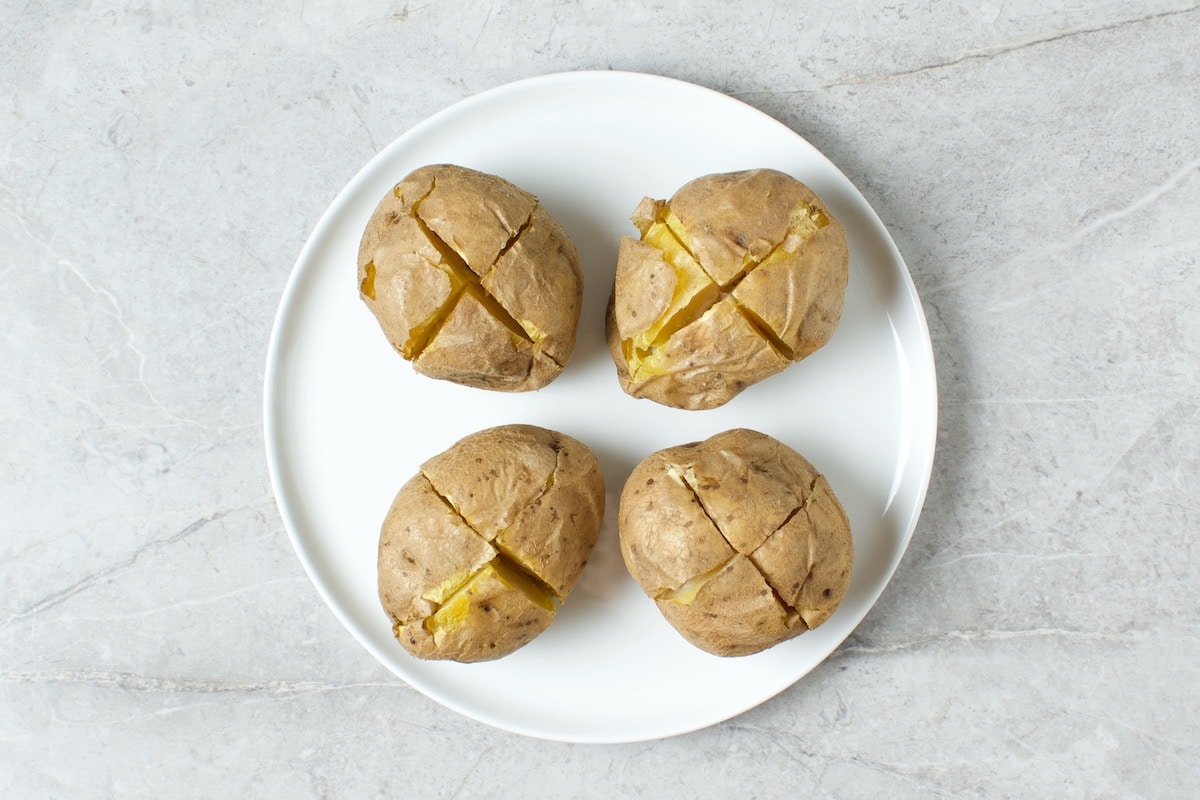If you need a quick meal that takes little to no maintenance, a baked potato might be your best option. They’re inexpensive, tasty, and a healthy alternative to French fries and hamburgers. However, if cooled improperly, this starchy vegetable can yield unsavory results.
Perhaps the most concerning consequence of cooling a baked potato improperly is the potential growth of Clostridium botulinum, which is a group of bacteria that can cause botulism. Botulism is a serious illness that can lead to paralysis and even death if left untreated. Symptoms include difficulty breathing and swallowing, vomiting, blurred or double vision, dry mouth, and baggy eyelids.
The good news is that botulinum bacteria need a low-oxygen environment to grow and thrive, which means that most food is safe from botulinum bacteria. The bad news is that when you wrap your potato in aluminum foil to bake, the potato is now in a low-oxygen environment.
The Best Way to Reheat a Baked Potato The skin crisps up beautifully, and the interior gets hot and fluffy. Plus, you can reheat a whole rack of baked potatoes in one go. Preheat the oven to 350 degrees. Place potato on a baking sheet or directly on the oven rack, and bake for 15-20 minutes, or until heated through.

Is aluminum foil dangerous?
So does that mean your potato is going to give you botulism if you cook it in tin foil? Not necessarily. Aluminum foil helps the skin on your potato stay nice and soft, and it is safe to use as long as you don’t allow your baked potato to cool down to a dangerous temperature while still in the foil after cooking.
What makes a TCS food?
There are five questions you should ask yourself when identifying a TCS food.
- Does this food have a high or low acidity level? Bacteria grows more readily on foods with lower acidity. For example, pineapple is highly acidic, so bacteria will be less likely to grow on it if you leave it out in the open for a long time. Cantaloupe, however, has lower acidity and will grow unsafe levels of bacteria if not refrigerated.
- How much moisture does this food contain? The more moisture a food has, the more likely it is to grow harmful bacteria. Watermelon is one example of a food that contains high moisture.
- How do the acidity and moisture interact with each other? You need to look at both the moisture content and acidity level together to determine if a food is considered a TCS food or not. For instance, although lemonade is high in moisture, it also has high acidity so it is not a TCS food. Tomato juice, however, has high moisture and low acidity—the perfect combination to create bacteria—making tomato juice a TCS food.
- Does it matter how this food is heated and cooled? If it matters how you cook or cool the food, it may be considered a TCS item. For example, baked bread is not a TCS food. You don’t need to worry about how long you leave it at room temperature, how you warm it up, or how you cool it down. Chicken, on the other hand, is a TCS food. It is important how you cook it and cool it down, and it makes a big difference whether or not you leave it out on the counter overnight.
- Does this food need to be packaged or stored in a specific way? Determine if there is a special way (such as refrigerating) that you need to store the food in order to prevent it from spoiling. If it requires a certain temperature with its packaging or storage, chances are it’s a TCS food.
If you ask these five questions about a potato, you will probably note that uncooked potatoes do not contain enough moisture to be a TCS food. When cooked, however, potatoes become a TCS food because their moisture level increases.
How to reheat a baked potato?
FAQ
Is it safe to eat reheated baked potato?
Can you reheat baked potatoes the next day?
How do restaurants keep baked potatoes warm?
How to reheat baked potatoes?
Preheat the oven to 350 degrees Fahrenheit (175°C). Place whole baked potatoes on the top oven rack, so they’re directly underneath the heat source. Reheat the potatoes for 20 minutes. Tip: place the baked potato on a cookie sheet or aluminum foil, so it heats up even more evenly. 2. How to Reheat Baked Potato in The Microwave
Is it healthy to eat a baked potato every day?
It is safe to consume potatoes every day as long as you cook them without much salt or saturated fats (fried). One medium-size potato can be part of a healthy diet, although it is better to combined other foods.
Should baked potatoes be refrigerated before reheating?
If your baked potatoes are frozen, thaw them out in the fridge overnight a day in advance before reheating them. Do not cool or store baked potatoes in aluminum foil. The foil traps the potato’s internal heat and moisture, which enables botulism-causing bacteria to grow.
Can You reheat potatoes with toppings?
Reheat toppings that are meant to melt and that taste good when hot, like butter or cheese. Add sour cream, non-dairy products, chives, or other toppings later. Choose the oven if you want to reheat your potato with toppings since they might get too messy for other methods.
